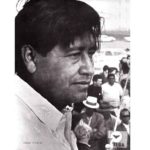Puha is a Comanche word used by many tribes, including Paiute, Ute, Panamint, Shoshone, Mono Yokuts. These tribes share a linguistic stock that goes … [Read more...]
In Indian Country
Many Native tribes consider the Spring Equinox as their New Year celebration. Spring Equinox begins on March 21 with the waking of the bears, followed … [Read more...]
In Indian Country
Powwows have taken place in Native America for millennia. They were a way for far-flung tribes to unite with other natives, to share food, trade, and … [Read more...]
West Block Woes
San Quentin North Block prisoners who were transferred to West Block are dealing with the new living conditions with patience. The transfer was a … [Read more...]
In Indian Country
Native people use peyote as a healer and an amulet. Peyote can be powdered and drunk as tea. Fresh buttons are eaten during ceremonies. Peyote is used … [Read more...]
In Indian Country
The Native American Church was incorporated as a religion on October 10, 1918, with the help of Quanah Parker, the last Chief of the Comanche Nation. … [Read more...]
In Indian Country
Native Americans consider sage to be a sacred plant, and it is present in nearly every native ceremony. Sage is considered holy because of two … [Read more...]
Indian Country
Powwow is an indigenous ancient ceremony practiced by most North American tribes still to this day. The Powwow is a sacred ritual. Its purpose is to … [Read more...]
View From The Valley
It was a great reason to celebrate – the French defeat in Mexico. Being raised in California’s Central Valley in a predominately Hispanic … [Read more...]
Remembering Caesar Chavez
As a young child I marched with Caesar Chavez in 1966 from Delano to Sacramento. My uncles were farm workers in the central valley in the 1960s and … [Read more...]
